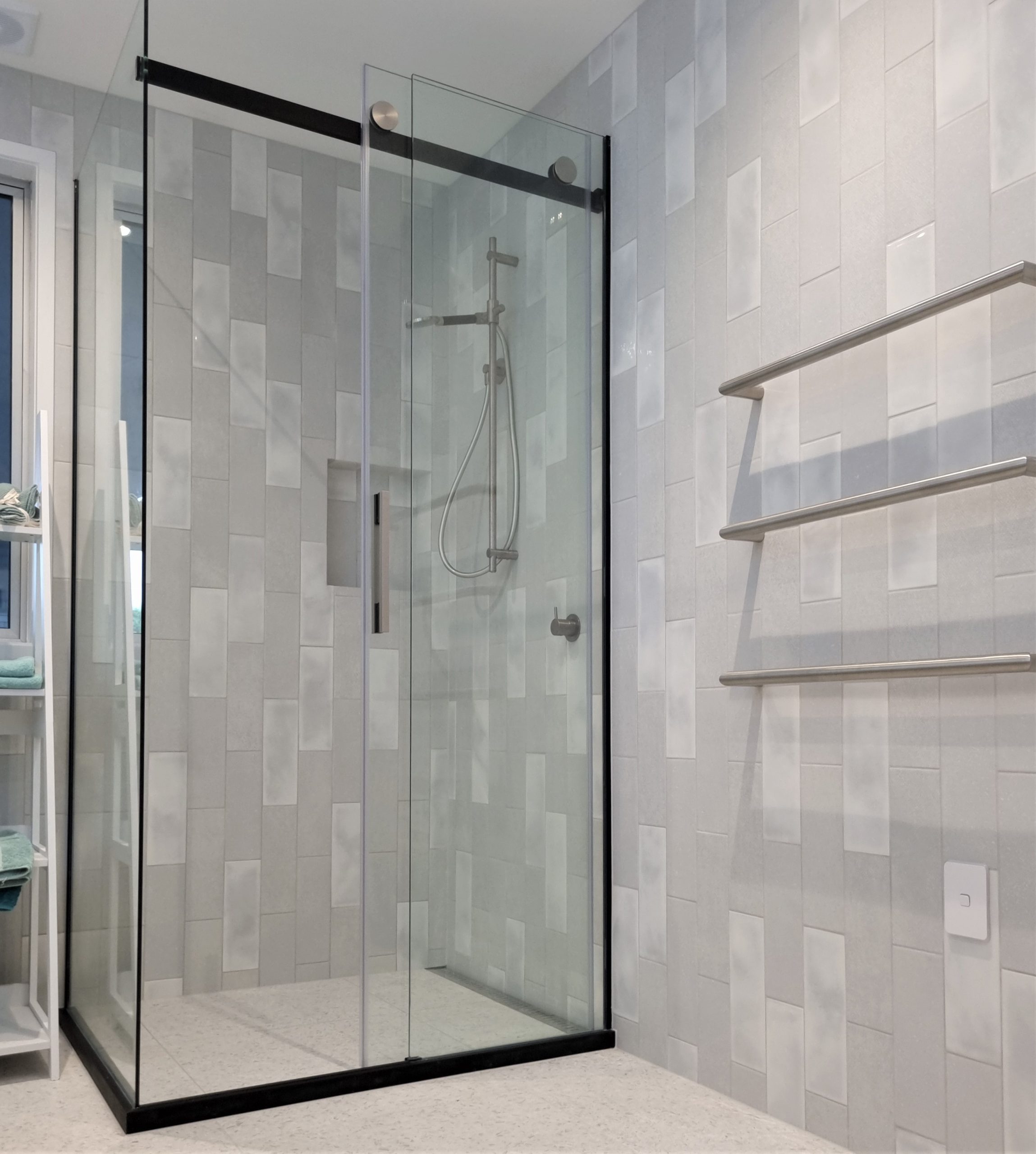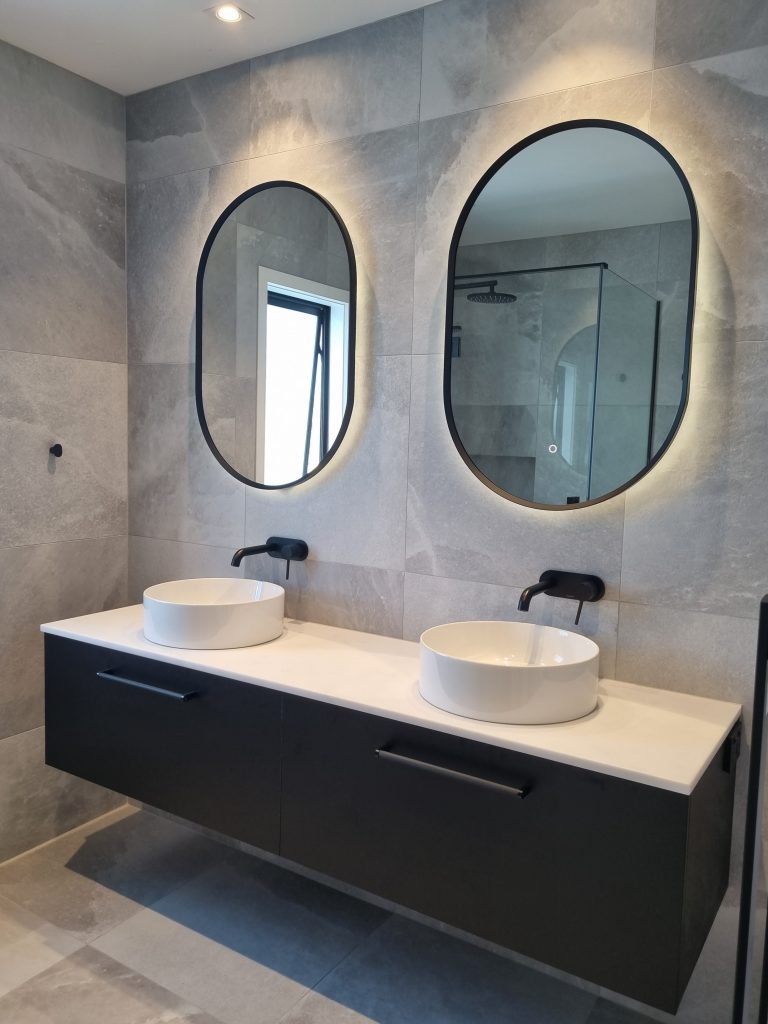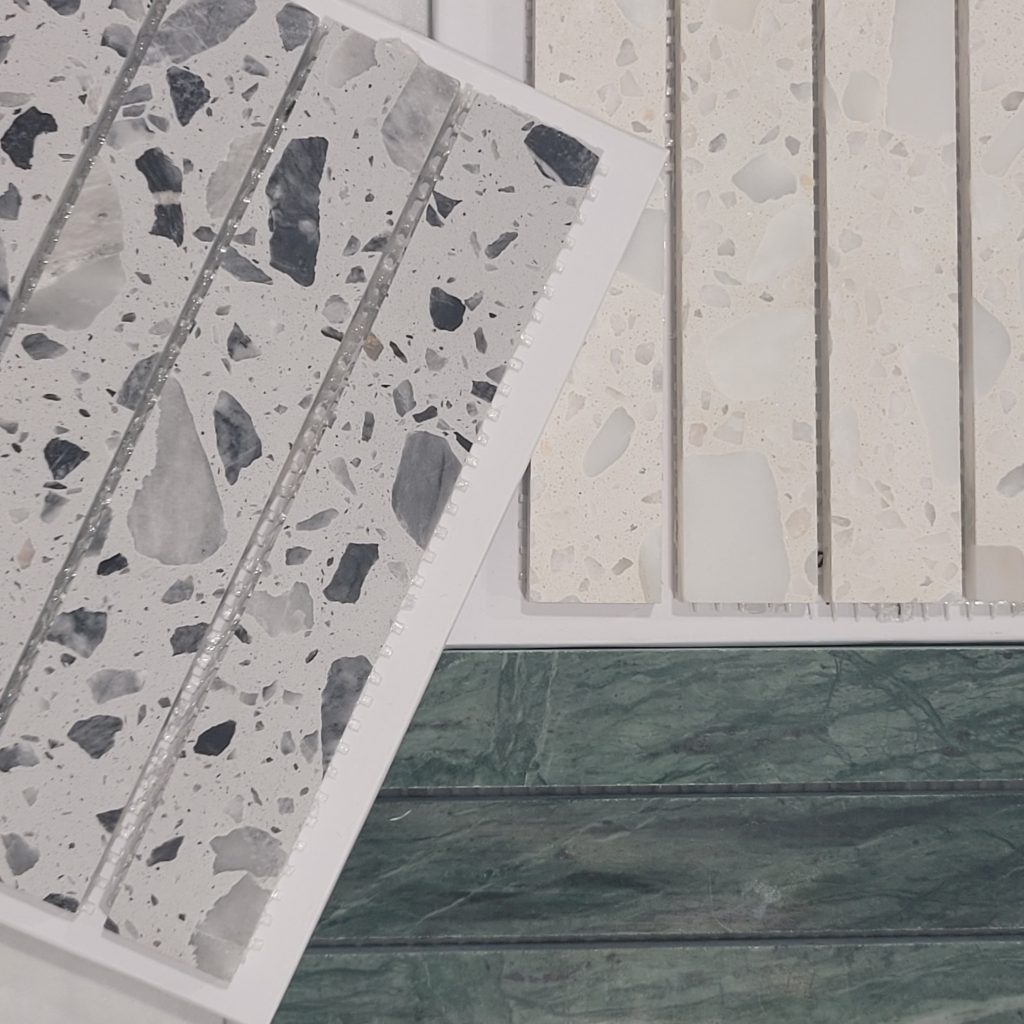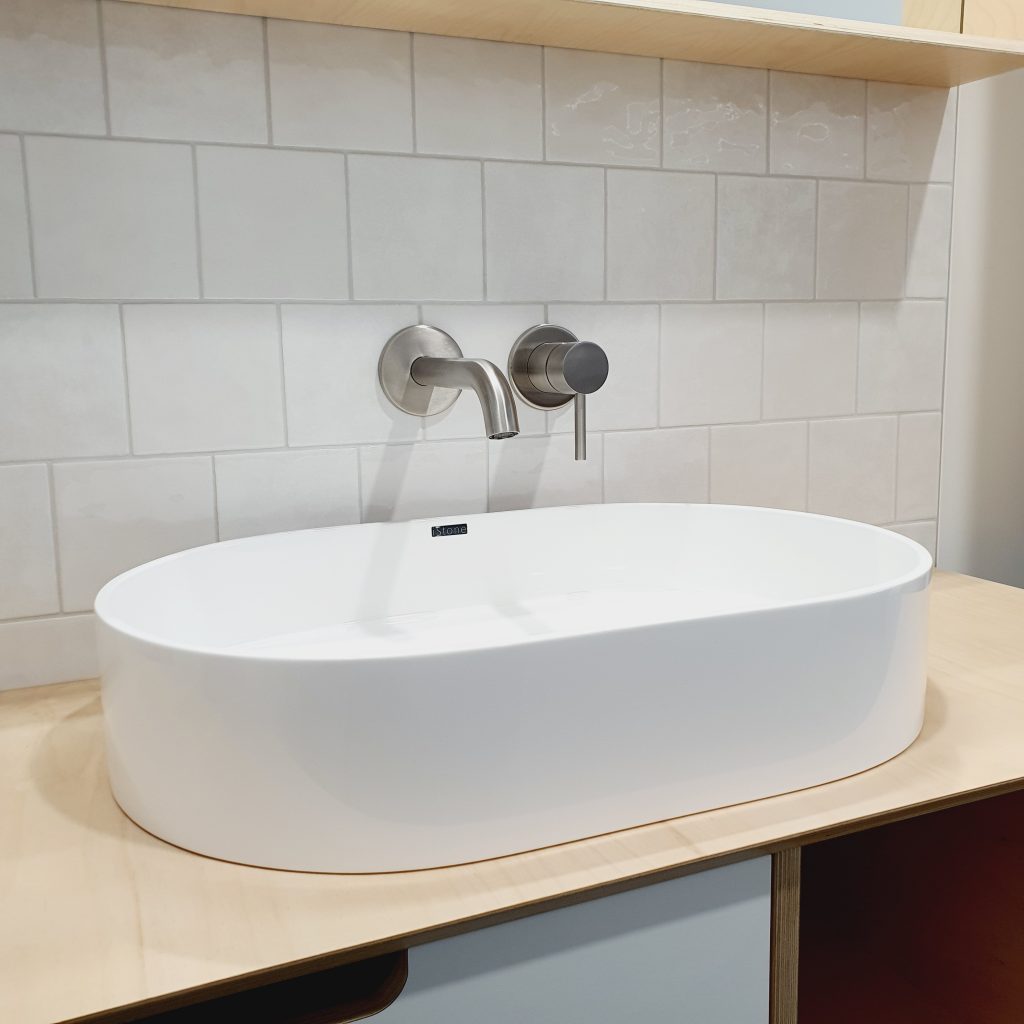The first mechanical shower, operated by a hand pump, was patented in England in 1767 by William Feetham, a stove maker from Ludgate Hill in London. His shower contraption used a pump to force the water into a vessel above the user’s head and a chain would then be pulled to release the water from the vessel.
Wikipedia
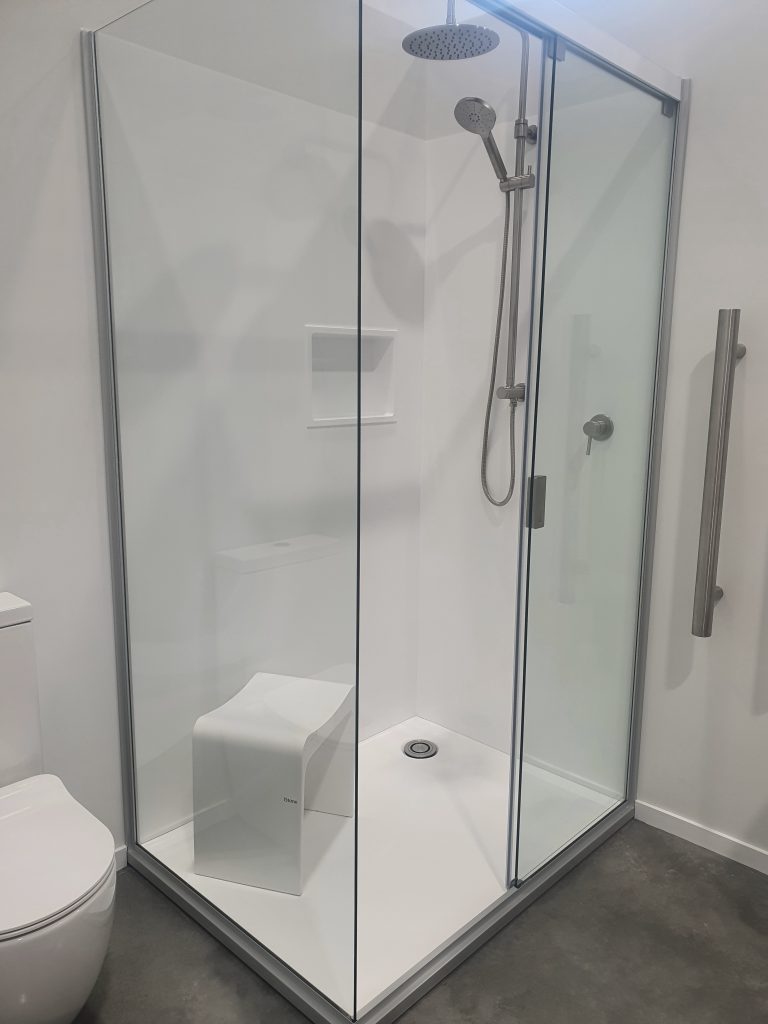
This Atlantis Acrylic shower features a low profile base, frameless glass and sliding door system. The shower has a Niche installed for your items. In lieu of a slide shower we have gone for a column here so that you have both the slide shower and rain head to use.
This Atlantis Acrylic shower has a frameless glass and sliding door option. The base is installed into the floor and then tiled over to give a seamless level floor look. The tiled Niches in the wall give storage area. There is a slide shower and a separate rain head.
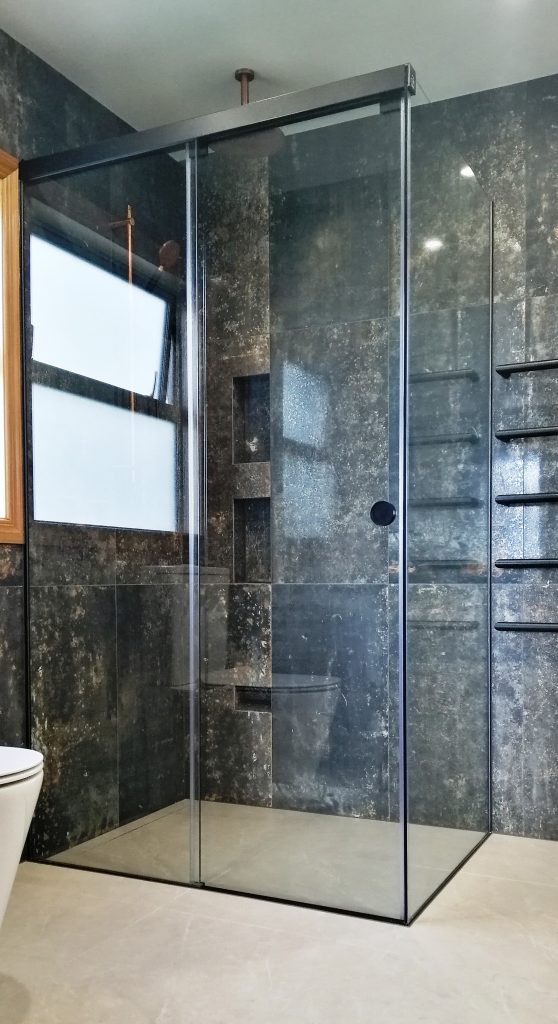
Now, in the 21st century, there are many different ways to shower and many different types of showers to do so in. We install Acrylic, Tiled, Seratone, and Novastone showers. There are also showers that are a mixture of different manufactured materials including tiled and acrylic components and so it makes the options available quite diverse.
For the purposes of this blog post we are going to focus on acrylic and tiled showers although we will list other options near the end of our post as well.
Acrylic showers
Modern acrylic showers are well known to be the most budget friendly shower choice but that is not to say they don’t look just as good as tiled showers. In fact, it really is a personal preference when it comes down to the look of your bathroom.
Acrylic showers come in all different shapes and sizes. You can get square (two-sided), alcove (three sided), angled (two-sided with angled glass) and curved (two-sided with curved sliding glass doors).
Square acrylic showers feature two walls of acrylic liner and two sides of glass (a door and a return). Square acrylic showers don’t necessarily mean they are square, as these showers come in different sizes, your “square” acrylic shower may actually be a rectangle! These are quite a popular shower with many of our acrylic shower installs being the 1200 x 900 size for that extra space to stretch out and enjoy.
Alcove acrylic showers feature three walls of acrylic liner and one wall of glass (the door). These are generally installed into ensuites and smaller bathrooms where there is a little cosy spot for them to position into. If the space is slightly too big, we can pack the wall out a little to get the perfect fit.
Angled acrylic showers feature two walls of acrylic liner and three walls of glass. That is two shorter return panels and an angled hinge door that sits in between them.
Curved acrylic showers feature two walls of acrylic liner and then a four panelled door and return set that means you slide each door open and closed to meet in the middle. This design of shower is a fantastic option for smaller bathrooms where you don’t have space to have a hinged door opening into the space and impacting other bathroom fittings or just your space to move in general.
With curved and angled acrylic showers you do lose a bit of space on with of the corners being cut off for the curve or angle, so if you can fit it, we recommend a step up to a 1000 x 1000 size instead of the standard 900 x 900 size shower.
Acrylic showers also come with the option of a flat or moulded wall liner. This just means that you either have a flat wall or you have a shelf moulded into the liner. You don’t have to have anything special set up behind the moulded wall liners as the shelf is sculpted outwards. The back of the liner still sits flat against the wall.
You can also get framed or frameless styles. Framed acrylic showers come with a white, chrome or coloured frame that sits around the glass. Frameless showers tend to have much more minimalistic framing and hardware to give a slightly more upmarket look. Lower profile trays are also available from some manufacturers to add that extra bit of class to your bathroom renovation finish.
Atlantis Ellure panelling is also another option for your liner style, with a tiled look acrylic liner.
The main pros and cons of acrylic showers;
PROS
- Generally inexpensive to purchase and install
- Quick to install
- Multiple options for size and shape
- Built in shelving with the moulded option
- Easy to clean
- Sturdy and easy to seal
CONS
- Limited colour options for hardware
- Generally only white liners and trays stocked
Tiled showers
Tiled showers can open up your world with the abundant selection of tile shapes, sizes, finishes and colours. Not to mention grout and trim colours to work with it for that spectacular look. Tiled shower purchase and install costs can be two to three times acrylic shower purchase and install costs. So it really is your personal preference and those pesky budget limitations that will steer you towards the right shower for your needs and space.
Tiled showers, although it may be hard to tell when looking at a finished one, generally come with a tile-over-tray and glass/hardware package. We plumb the tray onto your floor, waterproof the shower area, and a few steps later we then tile over it all for that glossy, luxurious finish.
Shelving in tiled showers can come as niches which are recessed into your wall (see our blog post here), or glass shelving which we can install in at the last stage.
The main pros and cons of tiled showers;
PROS
- A huge range of tiles to choose from, which can completely change your look from one to the next.
- You can match your shower to the rest of your floor and/or walls and tiles in other area’s of your home.
- More options on size and shape, especially if you get custom made glass and tray.
CONS
- Can be more expensive than acrylic showers .
- Takes more time to install.
Other types of showers
Acrylic and tiled showers are two main options when it comes to showers. But in New Zealand these days you can get many different types of showers. One option is to have an acrylic tray with tiled walls. Another option is to have an architectural finished tray (stone or metal look) in an acrylic shower, or a Novastone tray (solid surface) in a tiled shower. Glass also comes in different thicknesses, hardware comes in different colours, and doors can open and close in different ways too.
The best way to decide on a shower and get a professional install is to get in touch with us and chat about your specific bathroom space and needs. We can measure and quote for your next shower or bathroom renovation. Contact us

